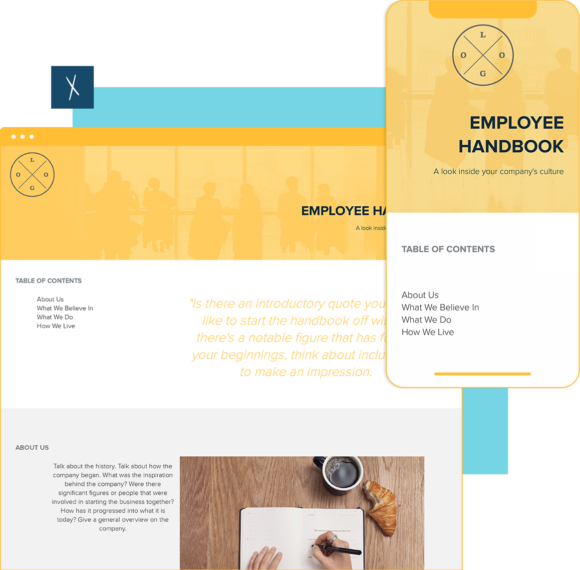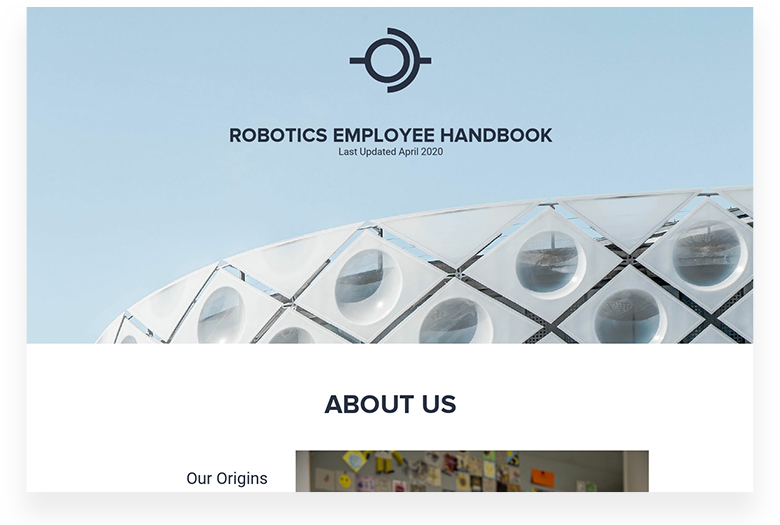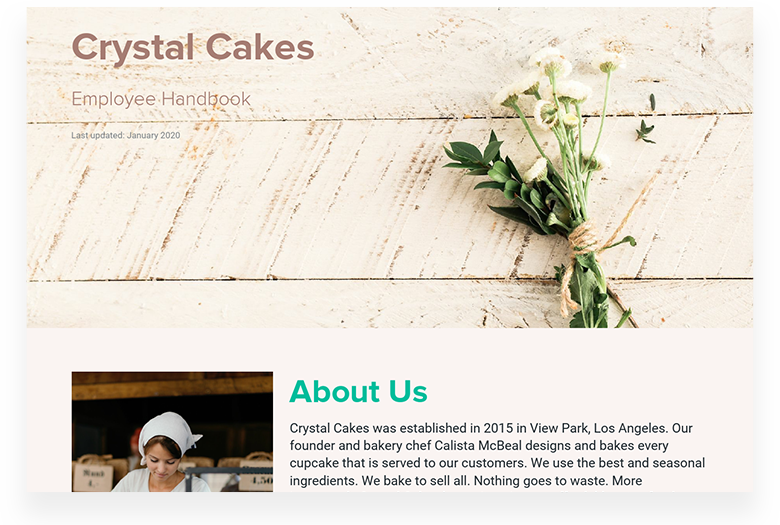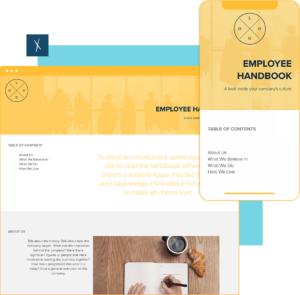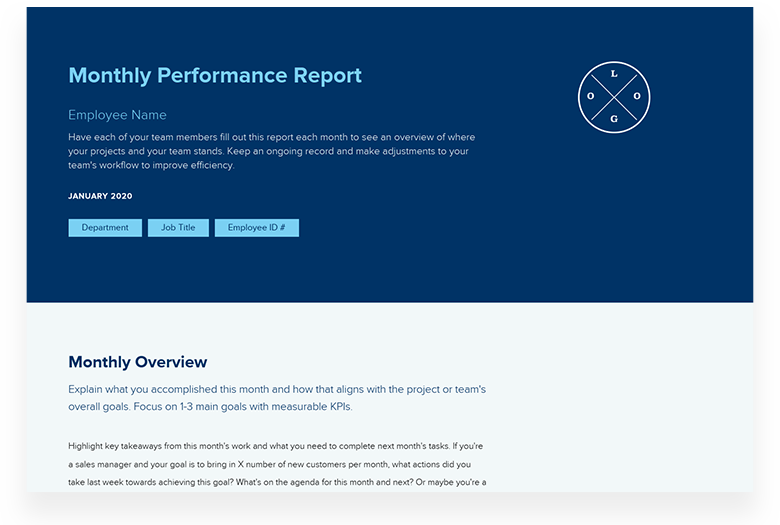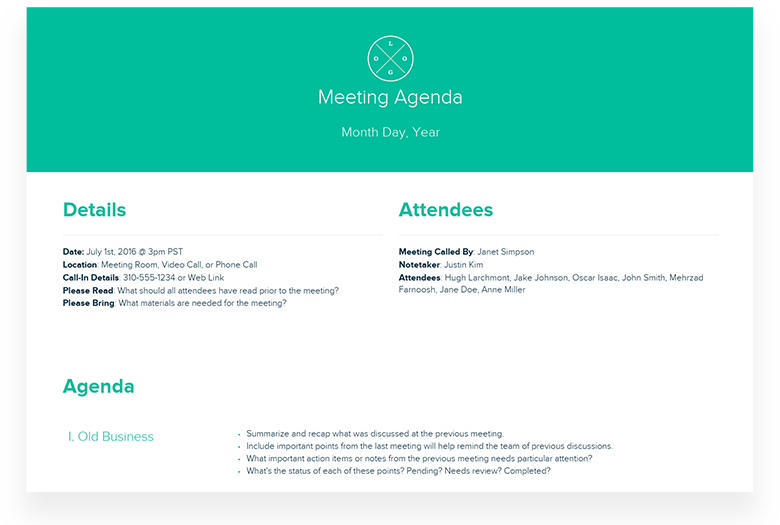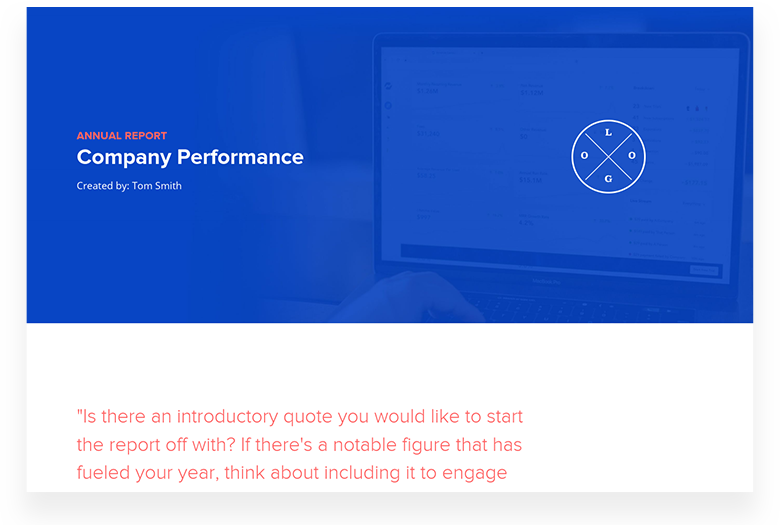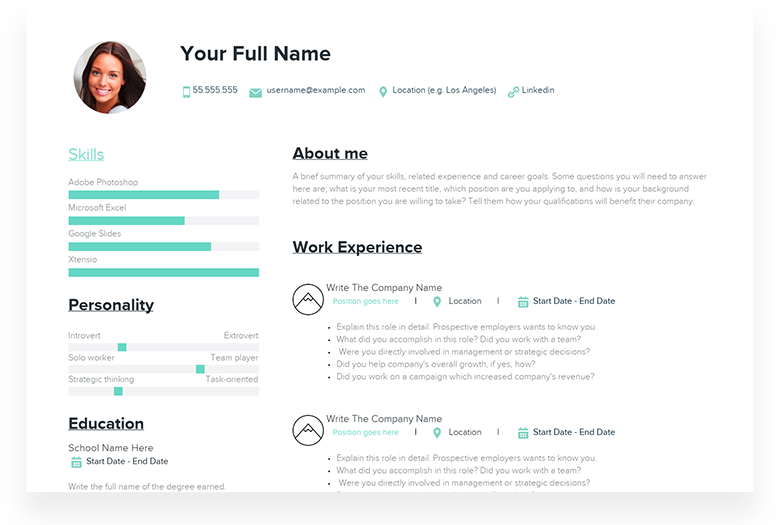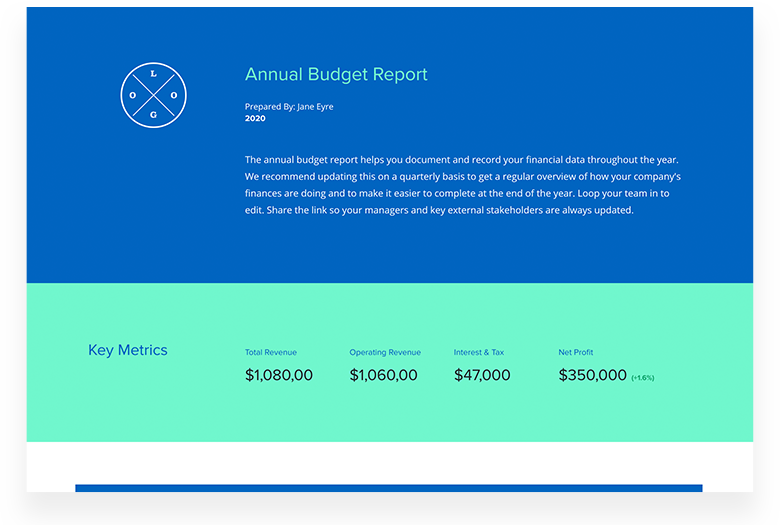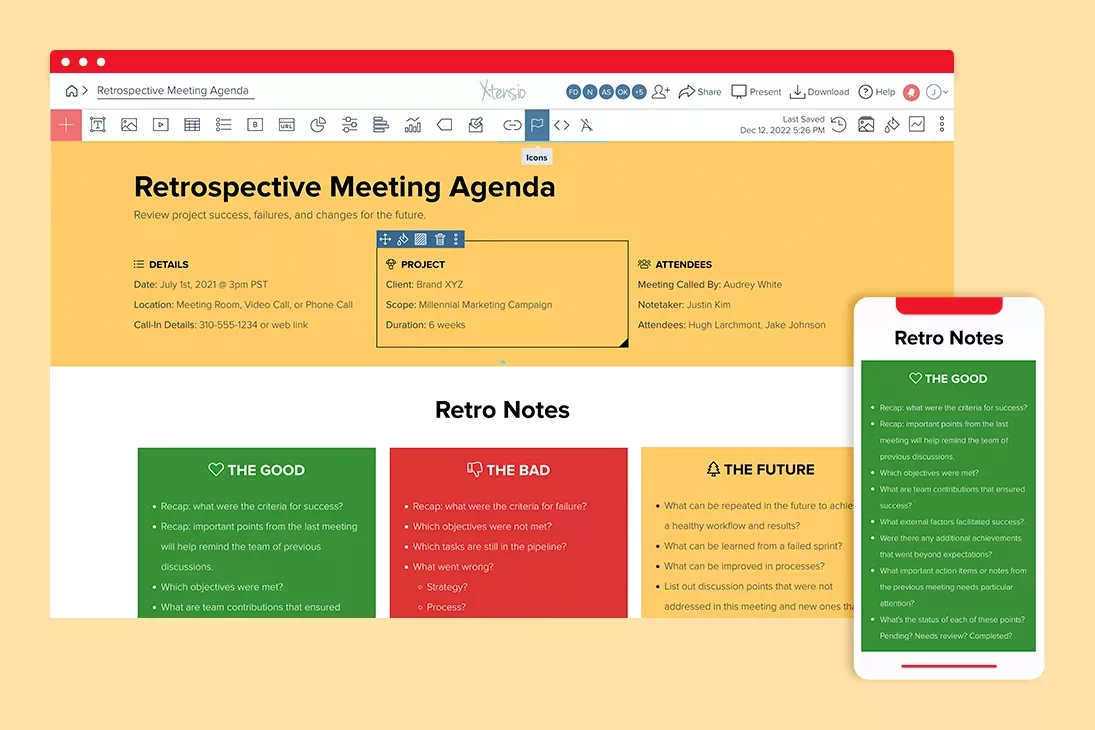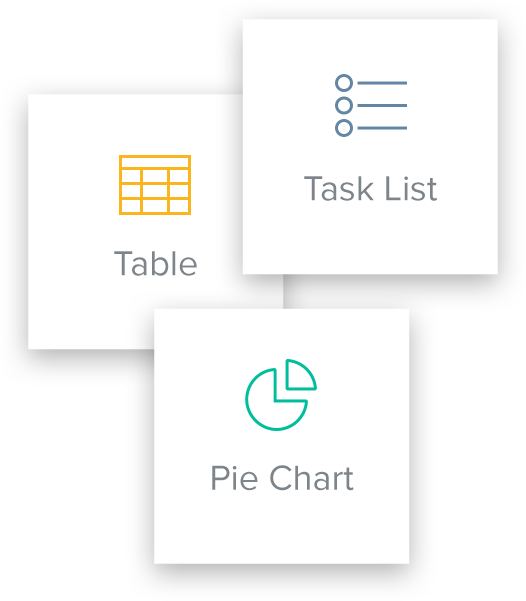Employee Handbook Template
An employee handbook is an internal document shared with new hires on their first day. Use the employee handbook template to detail your company’s mission statement, vision, culture, code of conduct, employee benefits, and other company policies and procedures related to employment. Employee handbooks are essential in guiding new employees through the inner processes of your workplace and setting them up for success within your company.
- Create a visually-impactful employee handbook to welcome new employees.
- Set clear expectations for all new employees.
- Maintain a positive workplace culture where issues can be handled fairly and consistently.
Xtensio is your team space for beautiful living documents.
Create, manage and share business collateral, easily.
Join the 243,608 changemakers.
Xtensio is your team space for beautiful living documents.
Create, manage and share business collateral, easily.
Join the 243,608 changemakers.
An employee handbook is an internal document shared with new hires on their first day. The handbook details your company’s mission statement, vision, culture, code of conduct, employee benefits and other company policies and procedures related to employment. Employee handbooks are essential in guiding new employees through the inner processes of your workplace and setting them up for success within your company.
- Create a visually-impactful employee handbook to welcome new employees.
- Set clear expectations for all new employees.
- Maintain a positive workplace culture where issues can be handled fairly and consistently.
Other Employee Handbook templates
Employee Handbook Template: Crafting the Ultimate Guide for Your Team
- Click and start editing, no account or credit card required.
Follow along with the instructional template details. Add charts, graphs, images, and videos to customize the handbook template and make it your own. Drag & drop. Resize. Customize the employee handbook format however you need. It’s the easiest editor ever.
- Customize everything in the team employee handbook template to match your brand.
Define your style guide. Add your (or your client’s) brand fonts and colors. You can even pull colors directly from a website to easily brand your employee handbook and more.
- Work on your handbook together on the cloud.
Add colleagues and stakeholders to collaborate on the handbook template. Changes automatically save and sync across all devices, in real-time.
- Share a link. Present a slideshow. Embed. Download a PDF/PNG.
The employee handbook template seamlessly adapts to your workflow. No more jumping from tool-to-tool to design different types of deliverables.
- Reuse and repurpose.
Save your own custom company employee handbook template. Or copy and merge sections into other documents.
Introduction to Employee Handbooks
In modern businesses, there’s one document that stands as a beacon of clarity and guidance: the employee handbook. But what exactly is it?
What is an Employee Handbook?
An employee handbook, often dubbed the “workplace bible,” is a compilation of a company’s policies, procedures, and cultural ethos. It’s not just a dry list of rules; it’s a reflection of a company’s identity, values, and expectations.
Importance of a Comprehensive Employee Handbook
Imagine starting a new job and being thrown into the deep end without a lifebuoy. Overwhelming, right? An employee handbook serves as that lifebuoy, offering new hires a clear understanding of what’s expected of them and what they can expect in return. It ensures consistency, fairness, and transparency, laying the foundation for a harmonious workplace.
Diving Deep: Components of an Employee Handbook
Crafting an employee handbook isn’t just about jotting down rules; it’s about communicating your company’s essence. Let’s break down its key components:
Company Mission and Vision
Start with the heart of your company: its mission and vision. This section should resonate with passion, showcasing the company’s purpose and long-term goals.
Code of Conduct and Workplace Behavior
Lay down the law but in a friendly manner. Highlight expected behaviors, workplace etiquette, and the company’s stance on issues like harassment and discrimination.
Compensation and Benefits
Money talks, and so do benefits. Clearly outline salary structures, bonus schemes, and benefits, from health insurance to gym memberships.
Office Procedures and Work Hours
From clock-in timings to lunch breaks, detail the daily rhythms of your workplace. This section can also cover remote work policies, especially relevant in today’s digital age.
Leave and Vacation Policies
Everyone needs a break! Specify the types of leaves available, be it sick leave, casual leave, or maternity/paternity leave, and the procedures to avail them.
Health and Safety Protocols
Safety first! Whether it’s guidelines for using office equipment or protocols in case of emergencies, ensure your team knows how to stay safe and sound.
Grievance and Disciplinary Procedures
In case of conflicts or issues, employees should know the proper channels to voice their concerns and the potential consequences of policy violations.
Legal Aspects and Compliance
A tad dry, but oh-so-crucial. Dive into the legalities, from contracts to compliance, ensuring everything’s above board.
The Art of Crafting an Engaging Employee Handbook
Your handbook shouldn’t be a snooze-fest. Let’s jazz it up!
Setting the Right Tone
Remember, this document reflects your company. Whether you’re a fun-loving startup or a serious corporate giant, let your unique voice shine through.
Making it Visually Appealing
A picture’s worth a thousand words. Use infographics, illustrations, and photographs to break the monotony.
Xtensio offers unlimited customization so your handbook can reflect your brand fully.
Keeping it Updated and Relevant
The business world is ever-evolving, and so should your handbook. Regularly update it to stay in sync with industry trends and internal changes. This template is a living document, you can update it anytime from anywhere.
Customizing Your Handbook with Xtensio‘s Templates
There’s no need to start from scratch. Xtensio’s templates can be your best friend, offering a solid foundation upon which you can build and customize.
Benefits of Using Templates
Templates are more than just time-savers; they offer a structured format that’s been tried and tested. They ensure you don’t miss out on any crucial sections and maintain a consistent flow. Plus, with a plethora of design features available, you can align your handbook with your brand’s aesthetics.
How to Choose the Right Template for Your Business
Not all templates are created equal. When selecting one, consider:
- Relevance: Does it cater to your industry’s specific needs?
- Flexibility: Can you easily customize it to reflect your brand?
- User-friendliness: Is it easy to navigate and update?
Xtensio is the ultimate platform for creating critical documents like your employee handbooks. It comes with instructions built in, too.
Common Mistakes to Avoid
Even with the best intentions, it’s easy to slip up. Here are some pitfalls to steer clear of:
Being Too Vague or Too Detailed
Striking the right balance is key. While you don’t want to overwhelm employees with information, being too vague can lead to confusion.
Ignoring Legal Requirements
Overlooking legal mandates can land you in hot water. Always consult with legal experts to ensure your handbook is compliant.
Not Reviewing and Updating Regularly
A static handbook is a redundant handbook. Regular reviews ensure it remains relevant and in tune with company and industry changes.
Digital vs. Print: Which is Better?
In the battle of formats, who emerges victorious?
you don’t need to worry with Xtensio’s template as it caters to both use cases effortlessly but here are the differences for both:
Pros and Cons of Digital Handbooks
- Pros: Easily updated, environmentally friendly, accessible from anywhere, and interactive elements can be incorporated.
- Cons: Dependence on technology, the potential for tech glitches, and not everyone is tech-savvy.
Pros and Cons of Printed Handbooks
- Pros: Tangible, no tech required, and some people prefer physical reading.
- Cons: Not easily updated, environmental concerns and storage and distribution can be challenging.
Once you create your employee handbook on Xtensio you can share it in many different ways.
Getting Employee Feedback on the Handbook
Your employees are the primary readers of the handbook, so their feedback is gold.
Importance of Feedback
Feedback ensures the handbook resonates with its audience. It can highlight areas of confusion, topics that need more detail, or sections that are redundant.
Methods to Gather Feedback
Consider surveys, focus groups, or one-on-one interviews. Encourage honest feedback by ensuring anonymity and emphasizing the value of their opinions.
Legal Considerations and Compliance
Navigating the legal maze can be daunting, but it’s crucial.
Ensuring Your Handbook is Legally Sound
From non-discrimination policies to compensation laws, ensure every aspect of your handbook is legally compliant.
Regularly Consulting with Legal Experts
Laws change. Regular consultations with legal experts can ensure your handbook remains up-to-date and avoids potential legal pitfalls.
Introducing the Handbook to New Employees
The first impression lasts, and the way you introduce the handbook can set the tone for an employee’s journey in your company.
First Impressions Matter
The employee handbook shouldn’t just be a document handed over on the first day and forgotten. Instead, make its introduction an event. Consider a dedicated session where HR professionals walk new hires through the handbook, highlighting key sections and answering any queries.
Making the Onboarding Process Smooth
The handbook is a crucial part of the onboarding process. It helps new employees understand the company culture, expectations, and their role within the larger organization. Ensure that they have easy access to both digital and printed versions, if available.
The Future of Employee Handbooks
As workplaces evolve, so do employee handbooks. Let’s gaze into the crystal ball and see what the future holds.
The Role of Technology
With advancements in technology, future handbooks will be interactive, with embedded videos, links to relevant training modules, and even AR (Augmented Reality) experiences that offer virtual office tours. Xtensio has many interactive modules that bring life to your employee handbooks.
Evolving Workplace Norms
As workplaces become more diverse and inclusive, handbooks will reflect these changes, with sections dedicated to mental health, remote working norms, and more.
Frequently asked questions
How do I create an employee handbook?
Use Xtensio’s free employee handbook template:
Start by defining your company’s mission, vision, and values.
Outline company policies, procedures, and expectations.
Include sections on employment terms, benefits, and workplace conduct.
Consult with legal counsel to ensure compliance with local laws.
Regularly update the handbook to reflect changes in policies or regulations.
What should a good employee handbook include?
A good employee handbook should include:
Company mission, vision, and values.
Employment terms and conditions.
Compensation and benefits information.
Workplace conduct and behavior expectations.
Safety and security protocols.
Procedures for reporting grievances.
Leave and absence policies.
Non-discrimination and equal opportunity policies.
Technology and Internet usage guidelines.
Acknowledgment page for employees to sign.
Can I write my own employee handbook?
Yes, you can write your own employee handbook. However, it’s essential to consult with legal counsel to ensure that your handbook complies with local laws and regulations. Regularly updating the handbook to reflect changes is also crucial.
Why is an employee handbook important?
An employee handbook is vital because it sets clear expectations, reduces misunderstandings, ensures consistent treatment of all employees, and provides a reference point for resolving disputes. It also helps in legal protection by documenting company policies.
How often should an employee handbook be updated?
An employee handbook should be reviewed and updated at least annually or whenever there are significant changes in company policies, procedures, or applicable laws.
Do all businesses need an employee handbook?
While not legally required for all businesses, an employee handbook is highly recommended. It provides clarity, sets expectations, and can protect businesses from potential legal disputes.
How do I distribute the employee handbook to staff?
Distribute the employee handbook to staff during onboarding, provide digital copies via email or company intranet, and maintain printed copies in accessible areas. Ensure all employees sign an acknowledgment page confirming receipt. Xtensio provides a solution for all these use cases.
What’s the difference between an employee handbook and a policy manual?
An employee handbook provides a broad overview of company culture, values, and general policies. In contrast, a policy manual offers detailed guidelines and procedures for specific operational areas.
Can employees refuse to sign the handbook acknowledgment?
Employees can refuse to sign, but it’s essential to document the refusal. The acknowledgment is proof that they received and understood the handbook, not necessarily an agreement with its content.
How can I ensure that my employee handbook is legally compliant?
Consult with legal counsel familiar with employment laws in your jurisdiction. Regularly review and update the handbook to reflect changes in laws and regulations.
Design, manage and share beautiful living documents… easily, together. Explore Xtensio
- Click and edit anything… together.
- Customize to match your branding.
- Share with a link, present, embed or download.
See how Xtensio can help your business

Build and launch products and services successfully.

Engage buyers more and close sales faster.
Teams use Xtensio to craft and share beautiful living documents.
243,608 users and counting.



Grace Ghunaim
Global Chief Strategy Officer (CSO) @

David Nason
CEO/Founder @

Jeff Schenck
Marketing Manager @

Ryan Dobson
Global Engineering Manager @

Arthur van de Graaf
Founder @

Apurva Pathak
Technical Product Manager @

Jenny Johansson
UX Manager @

Zac Heisey
Director of Digital Marketing @

Jacklyn Swiecicki
Marketing Manager @
